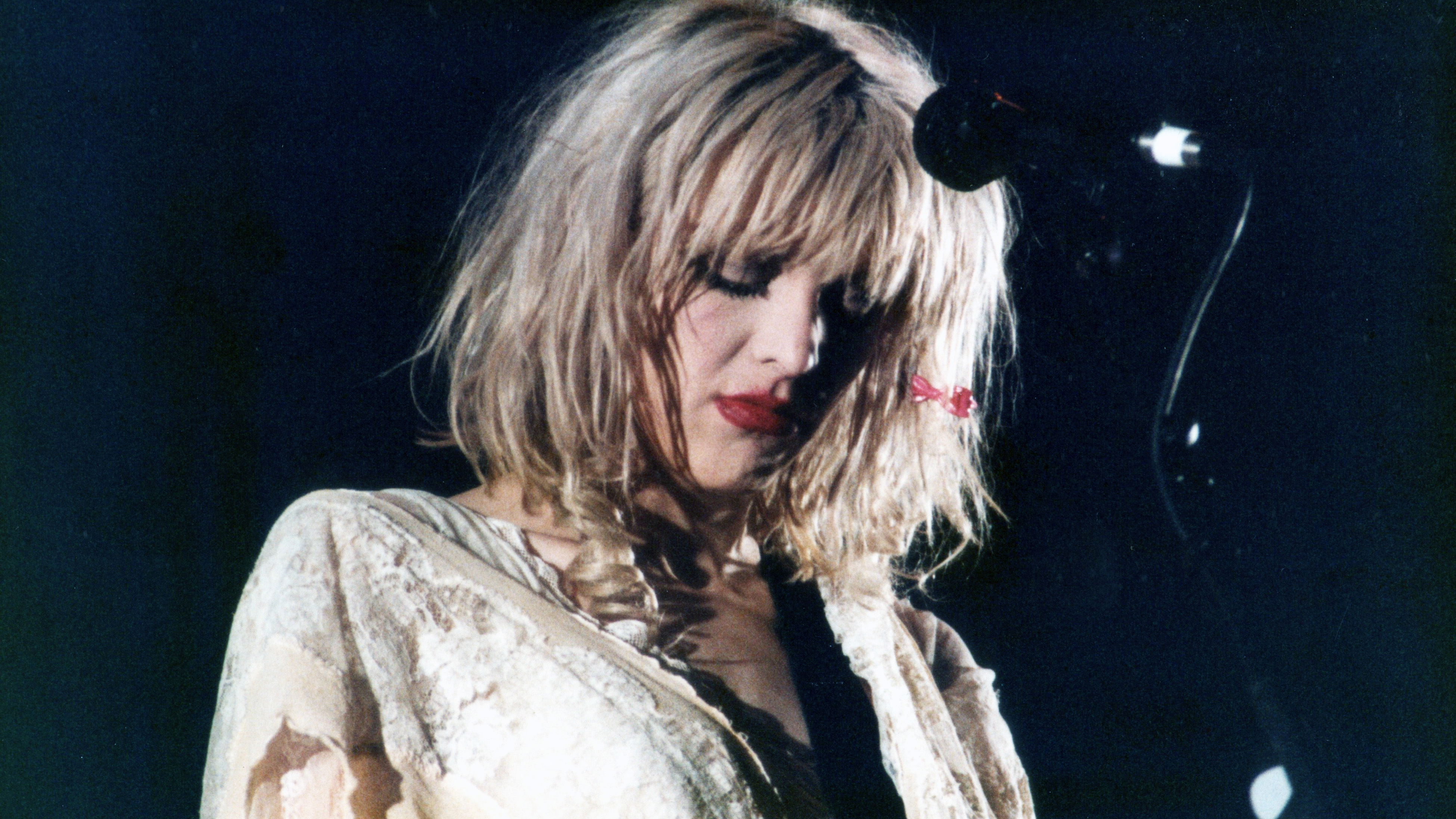“I contend that I was the first person to actually have a Super Fuzz Big Muff – before the rest of the boys”: How Courtney Love created the grunge classic that was released during her darkest hour
Hole’s song Violet came out just a week after Kurt Cobain’s suicide

Violet, the opening track on Hole’s 1994 album Live Through This, is a burning declaration of intense feminist rage.
It’s a song that’s capable of sending shivers down any listener’s spine, especially when the band’s leader, Courtney Love, starts screaming during its heavily overdriven chorus sections: “Go on, take everything, take everything, I want you to.”
It is also a song with a complicated backstory. Not only do the lyrics in Violet refer to Love’s past relationship with Billy Corgan of The Smashing Pumpkins, but the Live Through This album was released just one week after the suicide of Love’s husband Kurt Cobain.
Violet was written by Love with Hole’s other guitarist Eric Erlandson three years before the album’s release, in 1991.
This was the year when rock music was shaken by the biggest revolution since punk, as grunge bands from Seattle had huge hit albums – Nirvana with Nevermind, Pearl Jam with Ten and Soundgarden with Badmotorfinger.
Hole’s first recording of Violet was in November 1991 at London’s Maida Vale Studios as part of a radio session with BBC DJ John Peel.
The album version was committed to tape during the sessions at Triclops Studios in Atlanta nearly two years later.
Want all the hottest music and gear news, reviews, deals, features and more, direct to your inbox? Sign up here.
The album’s producers Paul Q. Kolderie and Sean Slade were hired because Love was a fan of their work on Radiohead’s 1993 debut Pablo Honey.
Violet begins with an E major chord played around the seventh fret with the root on the A-string, the major third on the sixth fret of the D-string and the perfect fifth played on the fourth fret of the G-string.
The same fingering is then moved down to the third fret for a C major chord and then up to the lower strings for a G major chord.
The B and high E strings are often kept ringing to add some ambience, and this riff is doubled by another guitar playing A-shaped versions of the same chords, with the high E barred by the first finger.
Like many songs of its era, Violet follows a quiet verse/loud chorus dynamic, where the sweeter moments are offset by screaming guitars and pounding drums. The pre-chorus is built from power chords, starting with E5, then F5 and finally G5 and the chorus follows an E5, C5, D5, A5.
There is little record of what guitars were used during the sessions, though in the music video for Violet, Love can be seen playing her vintage green Mercury guitar, which was often used on stage at this point in her career.
Mercury owners Tim George and Danny Babbitt, based in Atlanta, took inspiration from smaller Rickenbacker guitars and created their own string-through-body design.
They had also made an instrument for Nirvana guitarist Pat Smear and had been given approval to build a guitar for Cobain, but sadly the Nirvana frontman took his own life before they could get to work.
Around this time, Love was also known to use an Electro-Harmonix Big Muff Pi fuzz and a Boss DS-1 distortion.
Love told Guitar World in 1999: “I contend that I was the first person to actually have a Super Fuzz Big Muff, before the rest of the boys. It was when I was in this purist ’60s garage band called the Venerays, with Kat Bjelland.”
Bjelland went on to lead alternative rock band Babes in Toyland.
Love also told Guitar World about a new pedal in her collection called the Mystic Blue. “I like a good box,” she revealed, especially the ones with a good-sounding or “some kind of girly” name, while joking that “if they made one called Cherry Apple Blossom, I’d run with it every night”.
The lyrics in Violet have attracted much scrutiny and controversy over the years.
Love stated that the song had been partially influenced by poems by Alexander Pope, specifically The Dunciad, and Emily Brontë.
There is also an element of self-reflection within these lyrics, which she described as “being caught between two boys – representing the angel and devil within me, as well as my own nature”.
In 1995, when Hole performed Violet on Later… With Jools Holland, Love said by way of an introduction: “This is a song about a jerk, I hexed him, now he’s losing his hair.”
Given that she had dated Billy Corgan at the beginning of the decade – a musician who had gone from having long flowing locks to completely hairless around the same time in the mid-’90s – it was widely speculated that lyrics such as “when they get what they want, and they never want it again” were written about him.
As a result it was surprising that Love and Corgan would work together on the two Hole albums that followed – 1998 landmark Celebrity Skin and 2010’s Nobody’s Daughter – with Corgan recording bass parts on the former and co-writing several tracks on both.
However, in 2024 Love clarified some of her comments about Violet in quotes provided to the NME.
“It’s not just about Billy Corgan, as many might assume,” she said. ‘It’s about sitting on the fire escape of his flat, sipping cheap wine and taking a Vicodin – oh, to be young! – while the Chicago sun sets, leaving behind a bejewelled amethyst sky”.
Love also reflected on how the comments she made to Jools Holland on national television were “a bit mean” and indicative of her “being bitchy beefy” while joking that “someone has to uphold the standards of good faith beef”.
Violet became a top 20 hit in the UK singles chart and Live Through This climbed all the way to No.13.
This was an unbelievably tough time for Courtney Love.
On 16 June 1994, just two months after the release of Live Through This, Hole’s bassist Kristen Pfaff died of a heroin overdose. She was 27, as was Cobain.
In the wake of this second tragedy, Hole toured with Melissa Auf Der Maur on bass.
There were also rumours that Cobain had written Hole’s album. Rumours that neglected the fact that Violet, for one, had been recorded before Love and Cobain were in a longterm relationship.
In 1998, Love replied to those rumours in the best possible way.
She told the NME: “All this time I have never addressed this. But here I am finally saying for the very first time that Kurt did not [write] Live Through This.
“I mean for fuck's sake, his skills were much better than mine at the time – the songs would have been much better.”
Amit has been writing for titles like Total Guitar, MusicRadar and Guitar World for over a decade and counts Richie Kotzen, Guthrie Govan and Jeff Beck among his primary influences. He's interviewed everyone from Ozzy Osbourne and Lemmy to Slash and Jimmy Page, and once even traded solos with a member of Slayer on a track released internationally. As a session guitarist, he's played alongside members of Judas Priest and Uriah Heep in London ensemble Metalworks, as well as handling lead guitars for legends like Glen Matlock (Sex Pistols, The Faces) and Stu Hamm (Steve Vai, Joe Satriani, G3).
You must confirm your public display name before commenting
Please logout and then login again, you will then be prompted to enter your display name.
